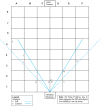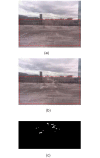WiseEye: Next Generation Expandable and Programmable Camera Trap Platform for Wildlife Research
- PMID: 28076444
- PMCID: PMC5226779
- DOI: 10.1371/journal.pone.0169758
WiseEye: Next Generation Expandable and Programmable Camera Trap Platform for Wildlife Research
Abstract
The widespread availability of relatively cheap, reliable and easy to use digital camera traps has led to their extensive use for wildlife research, monitoring and public outreach. Users of these units are, however, often frustrated by the limited options for controlling camera functions, the generation of large numbers of images, and the lack of flexibility to suit different research environments and questions. We describe the development of a user-customisable open source camera trap platform named 'WiseEye', designed to provide flexible camera trap technology for wildlife researchers. The novel platform is based on a Raspberry Pi single-board computer and compatible peripherals that allow the user to control its functions and performance. We introduce the concept of confirmatory sensing, in which the Passive Infrared triggering is confirmed through other modalities (i.e. radar, pixel change) to reduce the occurrence of false positives images. This concept, together with user-definable metadata, aided identification of spurious images and greatly reduced post-collection processing time. When tested against a commercial camera trap, WiseEye was found to reduce the incidence of false positive images and false negatives across a range of test conditions. WiseEye represents a step-change in camera trap functionality, greatly increasing the value of this technology for wildlife research and conservation management.
Conflict of interest statement
The authors have declared that no competing interests exist.
Figures




Similar articles
-
EventFinder: a program for screening remotely captured images.Environ Monit Assess. 2019 May 31;191(6):406. doi: 10.1007/s10661-019-7518-9. Environ Monit Assess. 2019. PMID: 31152251
-
Limitations of recreational camera traps for wildlife management and conservation research: a practitioner's perspective.Ambio. 2015 Nov;44 Suppl 4(Suppl 4):624-35. doi: 10.1007/s13280-015-0713-1. Ambio. 2015. PMID: 26508349 Free PMC article.
-
Large-scale and long-term wildlife research and monitoring using camera traps: a continental synthesis.Biol Rev Camb Philos Soc. 2025 Apr;100(2):530-555. doi: 10.1111/brv.13152. Epub 2025 Jan 17. Biol Rev Camb Philos Soc. 2025. PMID: 39822039 Free PMC article. Review.
-
Semi-automated camera trap image processing for the detection of ungulate fence crossing events.Environ Monit Assess. 2017 Sep 27;189(10):527. doi: 10.1007/s10661-017-6206-x. Environ Monit Assess. 2017. PMID: 28956203
-
Software to facilitate and streamline camera trap data management: A review.Ecol Evol. 2018 Sep 6;8(19):9947-9957. doi: 10.1002/ece3.4464. eCollection 2018 Oct. Ecol Evol. 2018. PMID: 30386588 Free PMC article. Review.
Cited by
-
A Smart Camera Trap for Detection of Endotherms and Ectotherms.Sensors (Basel). 2022 May 28;22(11):4094. doi: 10.3390/s22114094. Sensors (Basel). 2022. PMID: 35684718 Free PMC article.
-
Mammalian lures monitored with time-lapse cameras increase detection of pythons and other snakes.PeerJ. 2024 Jun 24;12:e17577. doi: 10.7717/peerj.17577. eCollection 2024. PeerJ. 2024. PMID: 38938602 Free PMC article.
-
Deployment-based lifetime optimization for linear wireless sensor networks considering both retransmission and discrete power control.PLoS One. 2017 Nov 29;12(11):e0188519. doi: 10.1371/journal.pone.0188519. eCollection 2017. PLoS One. 2017. PMID: 29186167 Free PMC article.
-
Co-occurrence models fail to infer underlying patterns of avoidance and aggregation when closure is violated.Ecol Evol. 2022 Jul 11;12(7):e9104. doi: 10.1002/ece3.9104. eCollection 2022 Jul. Ecol Evol. 2022. PMID: 35845361 Free PMC article.
-
Raspberry Pi nest cameras: An affordable tool for remote behavioral and conservation monitoring of bird nests.Ecol Evol. 2021 Oct 11;11(21):14585-14597. doi: 10.1002/ece3.8127. eCollection 2021 Nov. Ecol Evol. 2021. PMID: 34765127 Free PMC article.
References
-
- Rowcliffe JM, Field J, Turvey ST, Carbone C. Estimating animal density using camera traps without the need for individual recognition. J Appl Ecol. 2008;45: 1228–1236.
-
- O'Connell AF, Nichols JD, Karanth KU, editors. Camera Traps in Animal Ecology: Methods and Analyses. New York: Springer; 2011.
-
- Rovero F, Zimmermann F, Berzid D, Meek P. Which camera trap type and how many do I need? A review of camera features and study designs for a range of wildlife research applications. Hystrix. 2013;24: 148–156.
MeSH terms
LinkOut - more resources
Full Text Sources
Other Literature Sources
Research Materials
Miscellaneous

